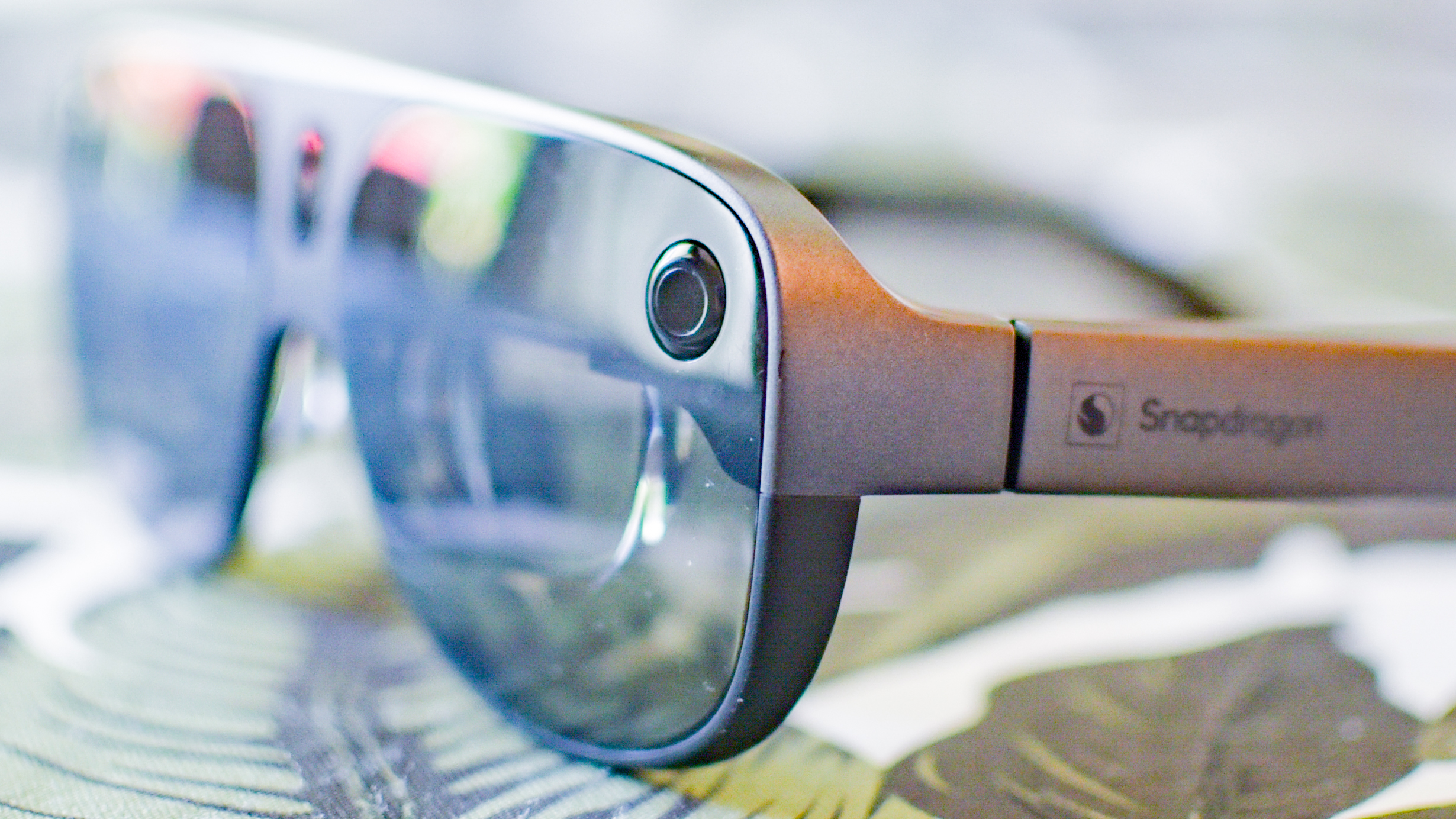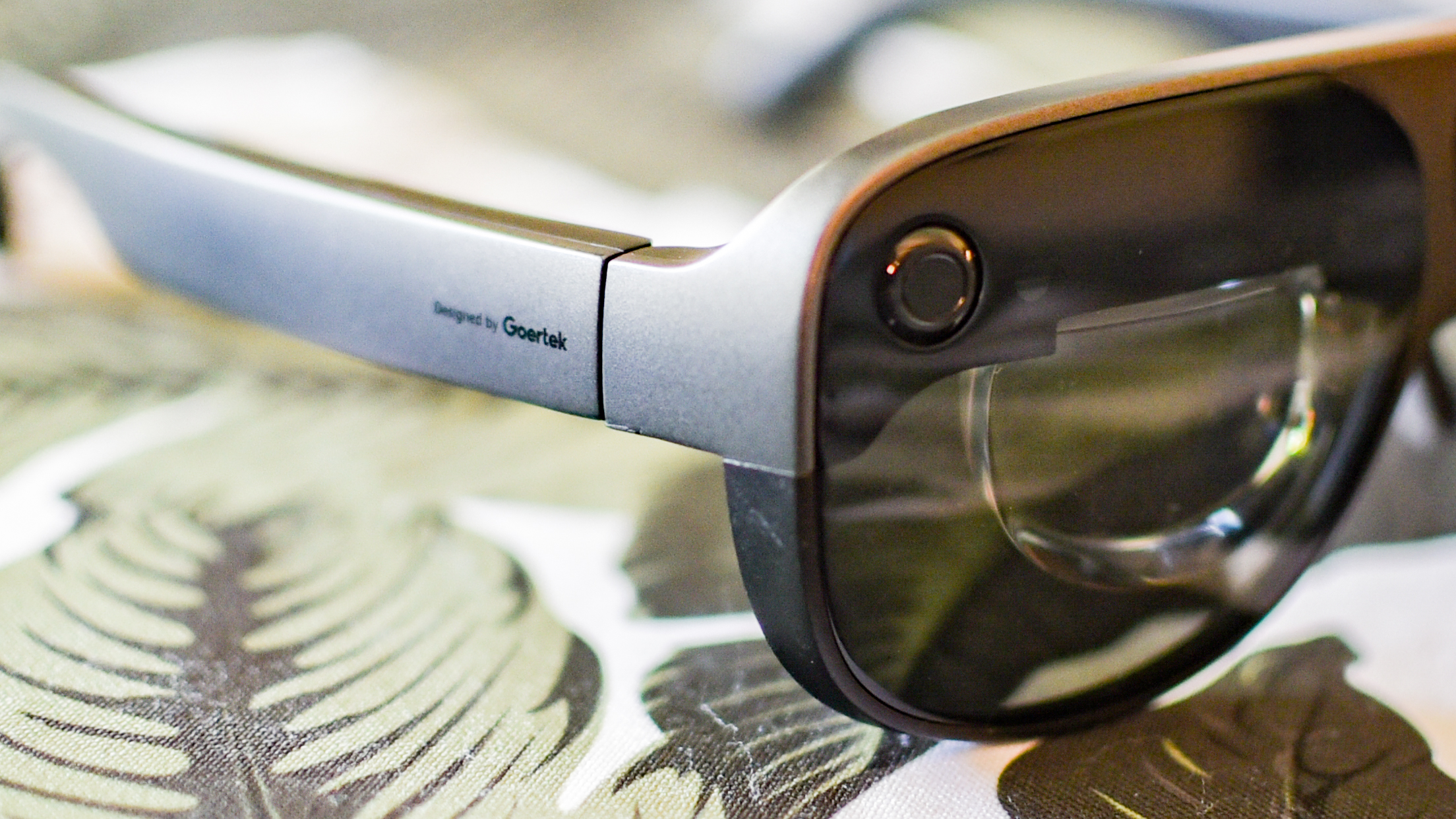Exclusive – Up close with Qualcomm Snapdragon AR2 smart glasses and why it's taking so long to perfect them

Qualcomm believes in mixed reality. Its first new augmented reality chip, the Snapdragon AR1 Gen 1, appeared in the Meta Ray Ban Smart Glasses, but that’s just the start of its mixed reality ambition. Like me, Qualcomm sees a future where our current smartphones sit more comfortably as glasses upon our faces. Hugo Swart, Qualcomm’s VP of XR, gave me an early look at the first reference device for the Snapdragon AR2 Gen 1 chipset, and I asked what’s keeping us from reaching this face forward future.
Qualcomm paid for my trip to the Snapdragon Summit in Maui, Hawaii, and though the promising new Snapdragon X Elite laptop chipset dominated the news, Qualcomm’s XR chips, which power a blend of augmented reality (AR) and virtual reality (VR), did not go unnoticed. Qualcomm has two new chips for XR, or mixed reality, the AR1 and AR2, and the latter will enable some truly interesting new products, the likes of which we’ve never seen before.
I believe the next big thing after smartphones will be glasses, and some folks at Qualcomm agree. The company sat down and showed me its new Snapdragon AR2 Gen 1 reference device while discussing the difficulties in creating a face-mounted wearable future. The Snapdragon AR2 Gen 1 will enable true AR features, but it won’t yet create a replacement for the smartphone.
When we talk about a face-mounted wearable, Qualcomm imagines two distinct categories of devices. There will be powerful computing tools, like Apple’s Vision Pro headset, coming next year. These will likely resemble larger glasses or goggles for the foreseeable future. The larger form factor will allow much more immersive environments, while also leaving room for robust processing and components that require more power.

There will also be smaller wearables that look like normal glasses. These won’t be able to create a new world in front of you, but they should present around a 100-degree field of view to project content. They will also be completely transparent when appropriate.
These glasses will sense and interact with your environment. They will have six degrees of freedom in detecting movement, so they will be able to sense if you move side to side, lean over, or rotate your head. They will have a variety of sensors, cameras, speakers, and other ways of communicating with you and the world around you.
If that sounds a bit vague, it's because Qualcomm has a great idea about the hardware needed for such a future, but the software is still one of the sticking points. To that end, Qualcomm is being very platform-agnostic. It isn’t trying to compete with Apple in creating a spatial computing ecosystem. It's building the tools, and then a variety of other companies can use them to create.
Sign up for breaking news, reviews, opinion, top tech deals, and more.
Qualcomm has no qualms with Apple’s spatial computing terminology, even if that’s not how Qualcomm products may be branded. The company sees the spatial aspect of mixed reality as a key to the next generation of wearable glasses. However, company reps used the term “mixed reality” or “XR” to encompass augmented reality and virtual reality together more often than they talked about spatial computing.
The thing holding back glasses is just what you'd expect

I asked Swart about the bottlenecks in technology that are holding back my holy grail of a face-mounted wearable. Of course, the biggest obstacle is exactly what you’d guess, but not all of the problems that I’d anticipate are actually problems for Qualcomm.
“In the early 2000s, we were already talking about watching a movie or doing navigation [on your smartphone], the kind of use cases we already saw beyond it.”
What needed to change? Well, everything, in steady, year-over-year improvements, but the biggest improvement needed to be the display, and Swart agrees.
“Back in the phone days, hey if I have a screen this size I can’t watch NFL, right? I can’t, it’s not worth it for me to do video calling. So this piece needed to be improved.”
It’s no surprise that displays are the biggest improvement needed in our face-mounted future. So far, the best wearable displays have been huge goggles, like Apple Vision Pro or the Meta Quest 3 headset. These are powerful and capable, but they won’t replace the smartphone.

Qualcomm showed me some possibilities for glasses today, but today’s models have an extremely limited field of view, only up to 45 degrees. That’s a good start, but the ultimate future will be much more exciting, according to Swart.
“The Holy Grail is, you know, glasses. A hundred-degree field of view. I walk with it on. I don’t need displays, I don’t need TVs. I don’t need laptops. I mean, that’s of course where we want to get.”
Besides the display, what else will be a problem? Swart lists connectivity, processing power, and content. Of course, this is Qualcomm, so the company thinks it has processing and connectivity covered with upcoming generations of Snapdragon AR chipsets. “I think we’re in a decent place when you talk about the processor and you talk about connectivity with Wi-Fi 7, and so forth,” says Swart.
Battery isn't the major concern I expected for glasses
Qualcomm started with the idea that wearable computers will only consume 1 Watt of power
How about the battery? It turns out, that won’t be the problem I expected. When I think about our face-mounted future, I worry that battery life will be a huge problem. It will be, but it’s a problem that Qualcomm can anticipate. Battery technology doesn’t improve so quickly, and we know how much power will be available. Swart ells me that the Snapdragon AR2 Gen 1 chipset was designed for devices that will send only around 1 Watt of power or less to the CPU.
Compare that to today’s smartphones. The Snapdragon 8 Gen 2 chipset can draw almost 15 Watts of power. Mobile chipsets in laptops and tablets can draw 25 Watts or more. An Intel i9 processor draws 45 Watts. Qualcomm started with the idea that wearable computers will only consume 1 Watt of power for processing, and maybe everything on board.
That means unlike Apple and some competitors, there won’t be a battery pack for Qualcomm’s dream of face-mounted computing. The battery can be small enough to fit onto the arm of the glasses because the entire device will require very little power. Swart even suggested an entire arm of the glasses could be a removable battery, able to be swapped quickly with a fully charged arm.
The hardest part may be waiting for glasses to happen
The hardest part about making the perfect wearable computer will be waiting for it to happen. Swart agrees that eventually, a face-mounted wearable may replace our traditional desktop and mobile phone computers, but it won’t happen quickly.
“I have my personal view that I do think that’s going to happen, but it’s going to be a while. My expectation is that phones and other compute units, personal compute units, are going to morph."

If glasses aren’t powerful enough to process the images for an immersive display, maybe your smartphone, or some future version of your phone, will do the processing, while the glasses will display the images. Maybe your watch will handle motion tasks while your phone talks to the cloud while your glasses scan your surroundings.
“To me, we’re going to see more and more distributed computing taking place, and then the devices will probably morph,” explains Swart.
I was able to take photos of the new Qualcomm Snapdragon AR2 Gen 1 reference device but I couldn’t try it on to see how it works. With the Snapdragon AR2 chipset on board, it should be able to handle movement and project augmented reality on the display, which, for now, only gives the user a 45-degree field of view of the AR features.
If that doesn’t seem impressive enough, maybe the ‘Gen 1’ is the most important part of this new chipset. Qualcomm definitely has a plan to take reality further than it currently goes.
You might also like

Starting more than 20 years ago at eTown.com. Philip Berne has written for Engadget, The Verge, PC Mag, Digital Trends, Slashgear, TechRadar, AndroidCentral, and was Editor-in-Chief of the sadly-defunct infoSync. Phil holds an entirely useful M.A. in Cultural Theory from Carnegie Mellon University. He sang in numerous college a cappella groups.
Phil did a stint at Samsung Mobile, leading reviews for the PR team and writing crisis communications until he left in 2017. He worked at an Apple Store near Boston, MA, at the height of iPod popularity. Phil is certified in Google AI Essentials. His passion is the democratizing power of mobile technology. Before AI came along he was totally sure the next big thing would be something we wear on our faces.